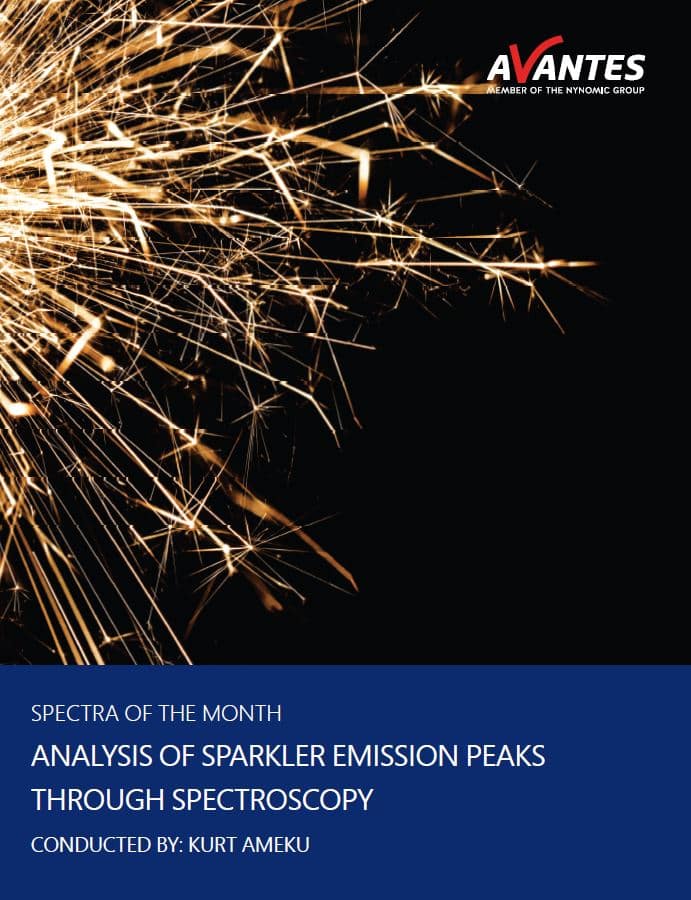Analysis of Sparkler Emission Peaks through Spectroscopy
Background/Applications:
Fireworks have long been tied to both spiritual and secular celebrations. Their origins are often attributed to China around 200 B.C.E., though “modern” fireworks utilizing gunpowder (a mixture of potassium nitrate, sulfur, and charcoal) came later sometime between 600-900 C.E. They did not appear in Europe until around the 13th century, though by the 15th century they were heavily featured in religious festivals and other important occasions. The fascination with fireworks traveled with European settlers to the New World. Fireworks were a significant part of the first Independence Day celebration, a role that has only increased since then.
Fireworks today come in a wide variety of intensity, duration, volume, and color. While the first two can be controlled by the amount of gunpowder contained in fireworks, the second two are altered through the inclusion of additional elements or molecules. Flashes and bangs can be added through the inclusion of aluminum powder, while sparks can be added with iron fillings. The color of a firework is also dependent on elemental inclusions. For example, adding copper produces a blue shade of firework, strontium a deep red hue, and barium a very bright green. Elements can also be mixed to give mixed colors, with strontium and sodium, which would produce red and yellow independently, giving an orange color to fireworks. Some colors can be achieved with multiple elements. For example, white fireworks can be created with the addition of titanium, zirconium, or magnesium.
In all cases, the included elements can be identified by the light they produce, and not just based on the general color. Similar to the previously studied laser-induced breakdown spectroscopy (LIBS) technique, lit fireworks will produce specific wavelength peaks that can be attributed to specific elements, which can be used to identify elemental composition. This experiment aims to measure different colored sparkler samples and detect the specific elements that give each sample its respective color. Three different colored sparkler samples (red, green, and blue) were used, as the elements that correspond to these colors (strontium, barium, and copper, respectively) have distinct peaks from one another.
Read More
 My Cart
My Cart 
